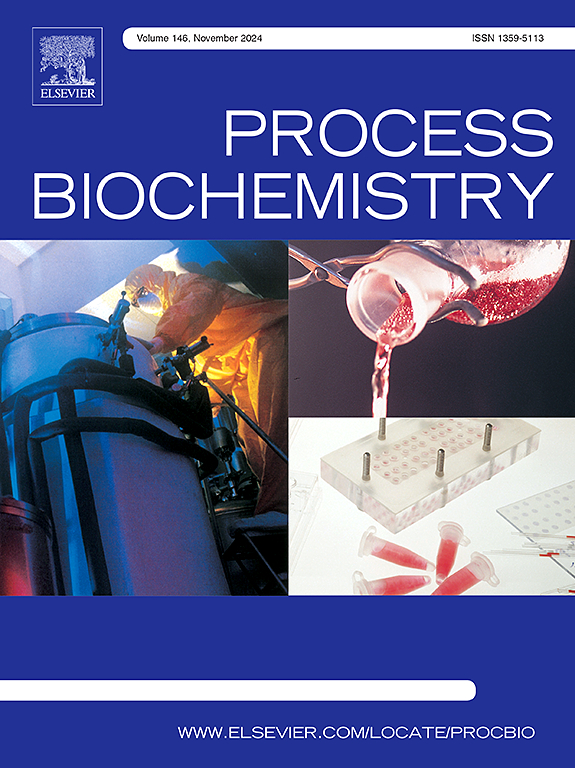生物丁醇发酵中贝氏梭菌对己酸胁迫响应的机理研究
IF 4
3区 生物学
Q2 BIOCHEMISTRY & MOLECULAR BIOLOGY
引用次数: 0
摘要
作为白酒生产中的主要固体副产品,酒糟废料有望成为生产生物丁醇等有价值化学品的原料。然而,在生物丁醇发酵过程中,DGW中过量的己酸会显著抑制产溶剂梭菌。本研究采用发酵性能分析和转录组学分析相结合的方法,深入研究了贝氏梭菌LY-5对己酸胁迫的响应。结果表明,0.4 g/L以上的己酸浓度可以抑制糖的消耗和丁醇的产生。影响细胞内能量状态和NADH/NAD+比值,在1.1 g/L浓度下细胞生长降低13.9 %。此外,转录组学分析表明,己酸影响了细胞壁和细胞膜、膜转运体、中枢代谢途径、双组分系统和孢子形成相关的基因表达谱。磷酸转移酶系统和乙醛辅酶a /乙醇脱氢酶基因表达的减少可能解释了葡萄糖消耗和溶剂生物合成的减少。这些研究结果可为构建高效产丁醇的耐受性菌株提供合理依据。本文章由计算机程序翻译,如有差异,请以英文原文为准。
Mechanistic insights into the response of Clostridium beijerinckii to hexanoic acid stress in bio-butanol fermentation
Distillers’ grain waste (DGW), a primary solid by-product in Baijiu production, holds promise as a feedstock for valuable chemicals such as bio-butanol. However, an excessive amount of hexanoic acid in DGW significantly inhibits solvent-producing clostridia during bio-butanol fermentation. This research delved into the response of Clostridium beijerinckii LY-5 to hexanoic acid stress by combining fermentation performance analysis and transcriptomics. The results indicated that hexanoic acid concentrations above 0.4 g/L could inhibit sugar consumption and butanol production. The intracellular energy status and the NADH/NAD+ ratio were affected, and the cell growth was decreased by 13.9 % at 1.1 g/L. Moreover, the transcriptomic analysis demonstrated that hexanoic acid affected the gene expression profiles related to the cell wall and membrane, membrane transporters, central metabolic pathways, the two-component system, and sporulation. The reduced expression of genes responsible for the phosphotransferase system and acetaldehyde-CoA/alcohol dehydrogenase may explain the decreased glucose consumption and solvent biosynthesis. These findings could provide a rational basis for constructing a tolerant strain for efficient bio-butanol production from DGW.
求助全文
通过发布文献求助,成功后即可免费获取论文全文。
去求助
来源期刊

Process Biochemistry
生物-工程:化工
CiteScore
8.30
自引率
4.50%
发文量
374
审稿时长
53 days
期刊介绍:
Process Biochemistry is an application-orientated research journal devoted to reporting advances with originality and novelty, in the science and technology of the processes involving bioactive molecules and living organisms. These processes concern the production of useful metabolites or materials, or the removal of toxic compounds using tools and methods of current biology and engineering. Its main areas of interest include novel bioprocesses and enabling technologies (such as nanobiotechnology, tissue engineering, directed evolution, metabolic engineering, systems biology, and synthetic biology) applicable in food (nutraceutical), healthcare (medical, pharmaceutical, cosmetic), energy (biofuels), environmental, and biorefinery industries and their underlying biological and engineering principles.
 求助内容:
求助内容: 应助结果提醒方式:
应助结果提醒方式:


